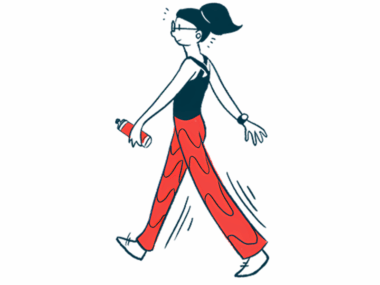Physical activity may reduce fatigue in people with RRMS: Trial
Relationship between being active, disability, exhaustion explored
Written by |

More daily physical activity, better physical condition, and lower disability were all associated with less fatigue for people with relapsing-remitting multiple sclerosis (RRMS), according to a clinical trial in Finland.
“The findings are interesting and support previous studies very well,” Marko Luostarinen, a doctoral researcher at the University of Eastern Finland and the study’s first author, said in a university news release. “Patients with MS [multiple sclerosis] should find a suitable form of exercise, taking into account their disability, which maintains their functional capacity and reduces fatigue.”
The study, “Physical activity may prevent fatigue in patients with MS,” was published in Multiple Sclerosis and Related Disorders.
Fatigue — the mental or physical exhaustion that limits a person’s ability to go about daily life — is a common MS symptom, affecting about 80% of patients.
Studies have shown that physical inactivity is linked to worse fatigue and it’s well established that people with MS are on average less physically active than people in the general population, a difference that can be exacerbated the worse a person’s physical disability is.
Consistently, physical activity has been demonstrated to lead to a number of benefits for MS patients, including reduced fatigue and better quality of life.
Link between fatigue, physical activity in RRMS
Scientists at the University of Eastern Finland conducted a clinical trial (NCT04115930) involving 41 people with RRMS, ages 18-55, and 20 healthy volunteers to learn more about the relationship between physical activity, disability, and fatigue in MS. All the participants were recruited at sites in Finland.
Participants first completed two standardized fatigue assessments — the Fatigue Severity Scale (FSS) and the Modified Fatigue Impact Scale (MFIS) — as well as two clinical measures of disability, the Expanded Disability Status Scale (EDSS) and the MS Functional Composite (MSFC), which encompasses tests of mobility, dexterity, and cognition.
The six-minute walk test, which measures the distance a patient can walk in six minutes, and the 30-second situp test, which tests how many situps a person does in 30 seconds, were also performed.
Participants were sent home with an accelerometer, which measures movement, and were asked to wear it for the next seven days to monitor their activity levels. They were also asked to keep a diary of their physical activity.
For the analyses, RRMS patients were split into two groups based on their EDSS scores. Those with a score of 2.5 or lower on the 10-point scale were considered a low disability group, whereas those with higher scores were considered a high disability group.
The healthy control participants were significantly younger than the RRMS patients and had a lower body mass index (BMI, a ratio of weight to height) and waist circumference.
They also had less fatigue than patients across the two measures, and patients in the high EDSS group had more fatigue than their low EDSS counterparts. About 63% of MS patients were found to have clinically relevant fatigue.
Overall, healthy controls were active for an average of 222 minutes (3.7 hours) a day, whereas RRMS patients were active for 201 minutes (3.35 hours), a difference that was not statistically significant.
Still, the control group spent significantly more time performing moderate to vigorous physical activity than the RRMS group and took more steps per day — an average of 8,557 compared with 6,341.
Across the range of tests used, a general relationship emerged between fatigue and both disability and physical activity among RRMS patients, with lower disability and higher daily activity being linked with less fatigue.
Moreover, better physical condition, or a person’s exercise capacity in physical function tests, also correlated with lower fatigue and disability.
No direct relationship was observed between disability levels and activity levels as measured by the accelerometer.
Although it’s not the first study to link fatigue to physical activity, this “study is unique because it was large and used modern methods,” Luostarinen said.
While the FSS and EDSS are the most common assessments for fatigue and disability, respectively, using the MFIS and MSFC helped strengthen the results and clarify the relationships, according to the researchers.
“More specific research is required into patients’ disability and actual physical activity levels, taking the existing levels of patients’ disability into account,” the scientists said.





